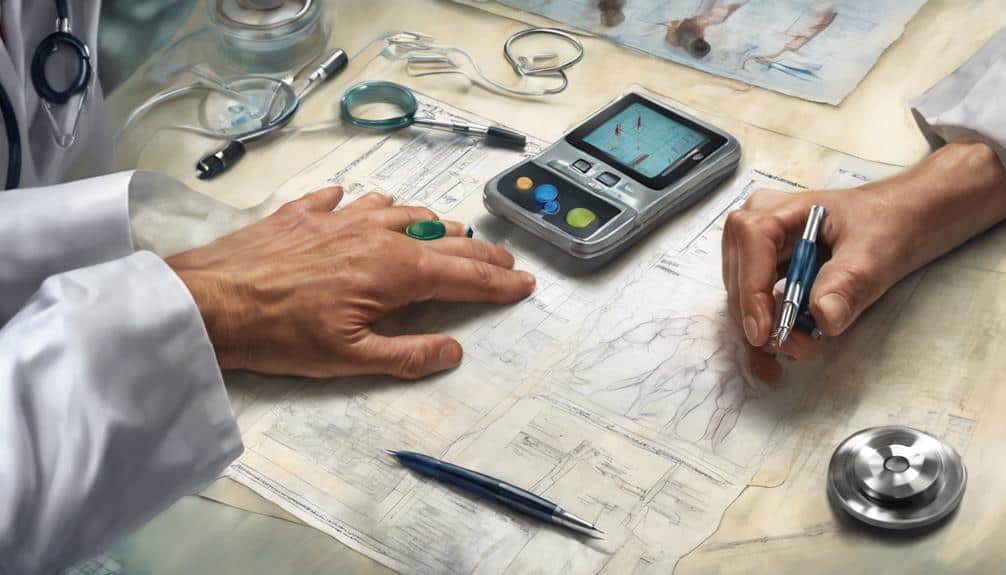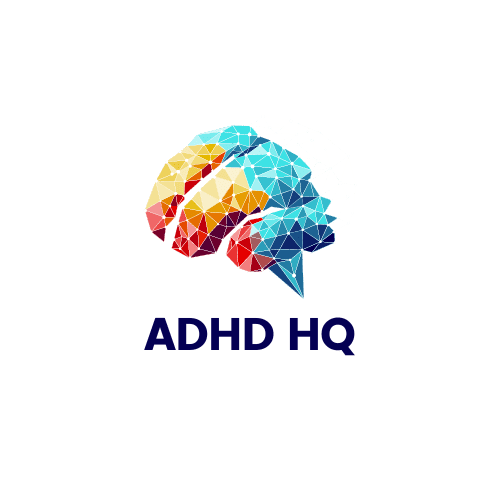Broken Wrist Syndrome Adhd
Exploring the intricate interplay between Broken Wrist Syndrome and ADHD, I've stumbled upon intriguing insights that connect these seemingly disparate domains.
The correlation between attention deficit hyperactivity disorder and wrist fractures raises compelling questions about underlying mechanisms and potential preventive measures.
Could understanding this link unravel new avenues for personalized treatment strategies and enhance overall patient care?
Join me in unraveling this enigmatic relationship and uncovering the implications it holds for clinical practice and patient outcomes.
Key Takeaways
- ADHD symptoms can impact wrist fractures in adults.
- Comprehensive assessment for accurate diagnosis is crucial.
- Treatment involves medication, therapy, and wrist exercises.
- Support systems and tailored strategies enhance functionality.
Symptoms of Broken Wrist Syndrome ADHD

Individuals with Broken Wrist Syndrome ADHD may experience a combination of physical discomfort and cognitive challenges that manifest in distinct symptoms. In the context of ADHD symptoms, these individuals may exhibit impulsive behavior and reduced attention, increasing the likelihood of accidents leading to broken wrists. The hyperactivity and inattention associated with ADHD can contribute to engaging in activities that may result in wrist injuries. Additionally, ADHD-related impulsivity and coordination difficulties may lead to falls or accidents, resulting in broken wrists for those affected.
People with ADHD are prone to risk-taking behaviors due to symptoms like distractibility and poor impulse control, which can play a role in the occurrence of broken wrist injuries. The impulsivity characteristic of ADHD can lead individuals to partake in activities without considering the potential risks, thereby increasing the chances of accidents causing broken wrists. Understanding these ADHD symptoms is important in recognizing the factors that may predispose individuals with ADHD to sustaining broken wrists.
Diagnosis and Assessment Methods

When diagnosing ADHD in individuals with extremity fractures, standardized scales such as the Wender Utah Rating Scale and Adult ADHD Self-Report Scale are commonly utilized for evaluations. These Rating Scales aid in evaluating childhood and current ADHD symptoms to determine the presence and severity of ADHD in patients with broken wrist syndrome.
Clinicians often employ a combination of clinical interviews, self-report measures, and collateral information to gather thorough data for an accurate diagnosis. Evaluating ADHD symptoms in adults with extremity fractures is important for understanding the potential link between ADHD and fracture risk.
Accurate diagnosis and evaluation of ADHD in individuals with broken wrist syndrome play an important role in developing tailored treatment plans for improved outcomes. These evaluation methods provide valuable insights into the specific ADHD symptoms experienced by individuals with extremity fractures, facilitating a more targeted and effective approach to managing ADHD in this unique patient population.
Treatment Options and Approaches

To effectively address the treatment of ADHD in individuals with broken wrist syndrome, a holistic approach combining medication, therapy, and lifestyle adjustments is typically recommended.
For ADHD management, medications such as stimulants or non-stimulants may be prescribed; however, these medications might need to be adjusted or monitored closely during the healing process of a broken wrist to account for potential interactions or changes in physical activity levels.
Behavioral therapy, like cognitive-behavioral therapy, can be beneficial for individuals with ADHD to manage impulsivity and improve focus, which in turn may aid in the recovery from a broken wrist.
Additionally, incorporating occupational therapy focusing on wrist exercises and rehabilitation can help individuals with ADHD and broken wrist syndrome regain strength and functionality in the affected wrist.
Healthcare providers must tailor treatment plans to take into account the unique challenges and needs of individuals with ADHD to assure thorough care and successful outcomes in managing broken wrist syndrome.
Impact on Daily Functioning

In my experience, the impact of ADHD on daily functioning is profound.
Tasks like time management and organization become challenging, affecting productivity.
Coping mechanisms are often developed to navigate through these difficulties efficiently.
Daily Tasks Affected
Individuals with broken wrist syndrome and ADHD encounter notable challenges in carrying out daily tasks that necessitate precise hand and wrist coordination, especially children and adolescents. Simple activities like writing, drawing, or even buttoning a shirt become arduous tasks due to the coordination difficulties stemming from both conditions.
For children in school, taking notes, completing assignments, and participating in arts and crafts activities can be particularly challenging. Adolescents may struggle with using technology, such as typing on a keyboard or using a smartphone, which require intricate hand movements. Tasks that involve tools or utensils, like eating with cutlery or using scissors, can prove to be frustrating and demanding.
The combination of broken wrist syndrome and ADHD hampers the ability to perform essential daily tasks that rely on fine motor skills.
Coping Mechanisms Developed
Crafting personalized strategies to navigate the challenges posed by broken wrist syndrome and ADHD greatly enhances daily functionality and overall quality of life for affected individuals.
- Adapting work or study environments to accommodate physical limitations and cognitive challenges
- Utilizing assistive tools like speech-to-text software or ergonomic devices
- Developing routines and schedules tailored to individual needs
These coping mechanisms are essential for individuals grappling with the dual challenges of broken wrist syndrome and attention deficit hyperactivity disorder (ADHD).
Coping Strategies for Individuals

I'll now address the coping strategies that can be beneficial for individuals with ADHD and broken wrist syndrome.
Mindfulness techniques, such as meditation and deep breathing exercises, can aid in reducing anxiety and enhancing focus during the healing process.
Additionally, implementing effective time management tips and organizational tools, like calendars and reminders, can assist in managing daily tasks and appointments while recovering from a wrist injury.
Mindfulness Techniques
Utilizing mindfulness techniques can greatly enhance self-awareness and focus for individuals managing ADHD symptoms.
- Deep breathing exercises help regulate impulsivity and improve attention.
- Body scans promote awareness of physical sensations, aiding in grounding and reducing distractibility.
- Meditation practices enhance emotional regulation and decrease stress levels, supporting better management of ADHD symptoms.
These coping strategies offer individuals with ADHD valuable tools to cultivate mindfulness, which can positively impact their executive function and overall well-being. By incorporating mindfulness into daily routines, individuals can empower themselves to navigate challenges associated with ADHD more effectively and promote a sense of calm amidst the chaos often experienced with this condition.
Time Management Tips
Implementing time management strategies is pivotal for individuals with ADHD to enhance productivity and task completion effectively. Tools like timers, alarms, and calendars can be beneficial in keeping track of time-sensitive activities.
Creating a daily schedule or to-do list helps in organizing tasks and setting priorities. Breaking down tasks into smaller steps aids in maintaining focus and completing projects gradually. Setting clear goals and deadlines provides structure and motivation for individuals with ADHD to stay on track.
Visual aids, such as color-coding or sticky notes, serve as reminders and reinforcements for time management strategies. By utilizing these techniques, individuals with ADHD can improve their time management skills and optimize their productivity levels efficiently.
Support Systems and Resources

Specialized therapists, occupational therapy, and counseling services form essential components of the support systems available for individuals managing ADHD and broken wrist syndrome. These professionals play a critical role in addressing the specific needs and challenges that arise from the combination of these conditions.
- Support Groups: Engaging with support groups can provide individuals with a sense of community and understanding, allowing them to share experiences and coping strategies.
- Educational Materials: Accessing educational materials tailored to ADHD and wrist injuries can offer valuable insights into managing symptoms and moving through daily tasks effectively.
- Online Forums: Online forums provide a platform for individuals to seek advice, ask questions, and connect with others facing similar circumstances.
Frequently Asked Questions
Is Broken Wrist Syndrome a Trait of Autism?
No, wrist injuries alone are not indicative traits of autism. A broken wrist is a physical injury that can happen to anyone, with or without autism. Seek medical advice for accurate assessments of both physical injuries and neurodevelopmental conditions like autism.
Is Cracking Your Joints Stimming?
Cracking joints through joint popping can be a physical habit for sensory feedback or relief. While common in stimming behaviors, it is crucial to differentiate between typical habits and repetitive stimming often observed in individuals with ADHD or autism.
How Do You Help Someone Who Broke Both Wrists?
When someone breaks both wrists, immediate medical attention is vital. Rehabilitation techniques like physical therapy and mobility aids aid in recovery. Emotional support and coordination with healthcare providers are essential for a complete care plan.
What Is Floppy Syndrome in Autism?
Floppy movements in autism, also known as hypotonia, involve low muscle tone impacting posture and motor skills. Challenges in coordination and balance are common. Therapy plays a crucial role in improving muscle tone and motor skills early on.
Conclusion
To sum up, the link between ADHD symptoms and broken wrist syndrome in adults highlights the importance of understanding the potential impact of ADHD on musculoskeletal health. By uncovering this association, we can better tailor clinical management and treatment approaches for individuals with ADHD who may be at higher risk for extremity fractures.
This connection serves as a window into the intricate relationship between mental health and physical well-being, painting a vivid picture of the complexities within the field of healthcare.






